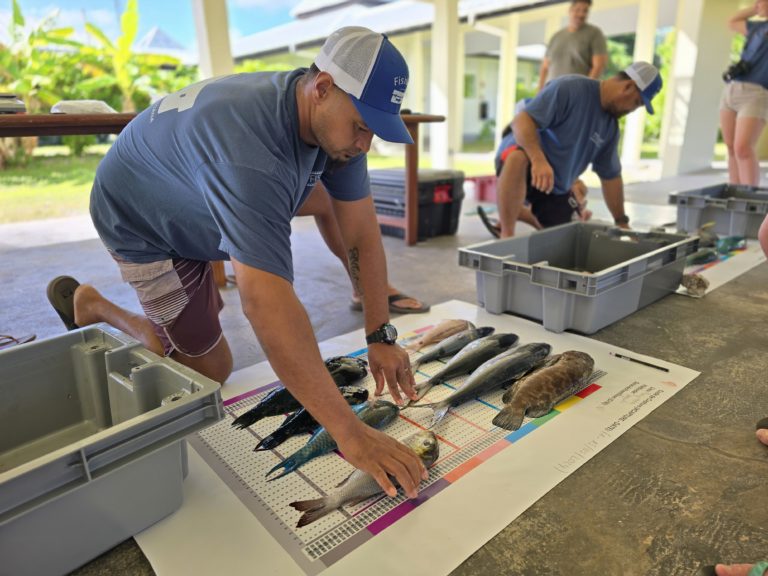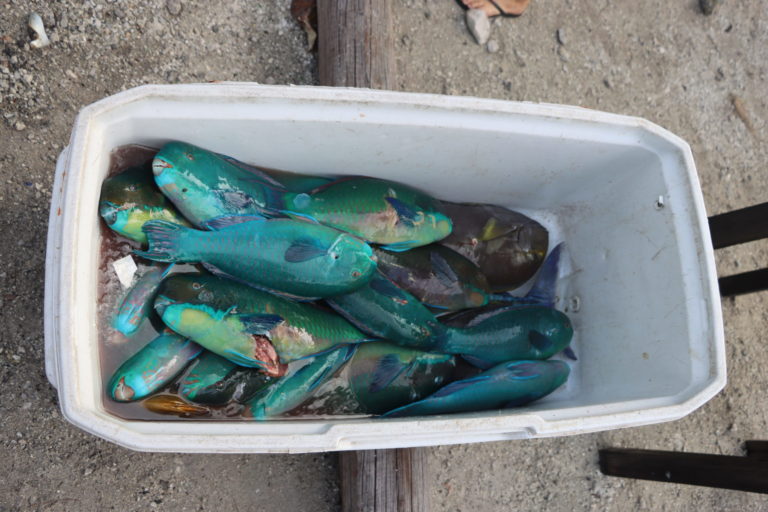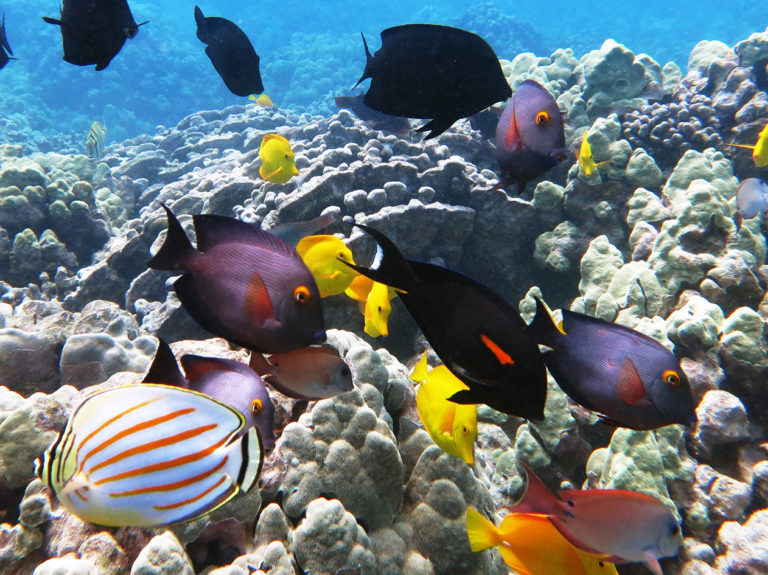Using the FishKit Toolkit
Learn about the tools in the FishKit toolkit and follow step-by-step guidance for using and interpreting the Stock Health Tracker, Size Limit Builder, Bag Limit Builder, Temporary Closures, and Data Repository.

Stock Health Tracker
The Stock Health Tracker lets users quickly visualize simple indicators of fishery health using length data. This information can be used to understand patterns and trends related to fishery health. Learn to use the Stock Health Tracker’s functions and interpret the results.

Size Limit Builder
The Size Limit Builder delivers fast and practical fisheries science to groups that are looking to design size limits for their fishery. It lets users compare different size limits for a species of interest to evaluate tradeoffs between sustainability and catch associated with the different size limits.

Bag Limit Builder
The Bag Limit Builder is designed to enable exploration of bag limits as management measures to reduce total fishing mortality, often in recreational, small-scale, and artisanal fisheries. Learn to use the Bag Limit Builder’s functions and interpret the results.

Temporary Closures
The Temporary Closures module is designed to enable exploration of temporal closures as management measures to reduce catches, often in recreational, small-scale, and artisanal fisheries. Learn to use the Temporary Closure’s functions and interpret the results.

Data Repository
The Data Repository is where the data used in the FishKit tools are held. This repository contains life history information, length data, catch data, and other pieces of information that are used in the toolkit. Learn to explore existing life histories, enter your own life history information, explore example data, and upload your own data for use in the toolkit.
See the FishKit for Fisheries Management section to learn how FishKit fits into the broader fisheries management process. See The Science Behind FishKit section to learn about the science behind the FishKit toolkit and key fisheries science topics.
FishKit is a publicly available, free toolkit. Simply create an account by following these steps to access the FishKit tools:
- Navigate to the FishKit app.
Go to https://natureanalytics.shinyapps.io/FishKit/ - Create an account
Use the “Sign Up” tab to create a FishKit account. Enter a username and password, and read and agree to the Terms of Service. You will then be taken into the FishKit app where you can utilize all of the FishKit tools.

Size Limit Builder
What is the Size Limit Builder?
What are the steps for using the Size Limit Builder?
How do I interpret the results from my Size Limit Builder session?
How do I use and interpret the advanced analysis function?
How do I use and interpret the uncertainty test function?
How do I use and interpret the transitional dynamics function?
Data Repository
How do I access FishKit’s life history repository?
How do I create a life history?
How do I prepare length data to be uploaded to the Data Repository?
How do I upload length data for use in FishKit?
How do I access example length data?
How do I create a fishery selectivity function?
How do I prepare catch data to be uploaded to the Data Repository?
How do I upload catch data for use in the Bag Limit Builder and Temporary Closures?
How do I access example catch data?
The Science Behind FishKit
What life history information is important for FishKit?
What do I need to know about length data and sampling for use in FishKit?
What are per-recruit analysis and spawning potential ratio?
What concepts and considerations are important for the Stock Health Tracker?
What concepts and considerations are important for the Size Limit Builder?
What concepts and considerations are important for the Bag Limit Builder?
How can I access the technical documentation?
The FishKit User Guide is provided for general informational purposes and is not advice or guidance as to whether FishKit is appropriate for your use or circumstances. You are solely responsible for deciding whether FishKit meets your needs, and you should consider a variety of factors in consultation with professionals and counsel of your choosing. You must perform your own evaluation of FishKit to determine whether it is appropriate to use with your fisheries/resources. You assume all risk from the use of FishKit and this user guide, which is not guaranteed to be complete or accurate in all respects. For both FishKit and this user guide itself, The Nature Conservancy makes no warranty of any kind (express, implied, statutory or otherwise), and The Nature Conservancy specifically disclaims all implied warranties, including any implied warranty of merchantability, fitness for a particular purpose, or non-infringement, to the maximum extent under applicable law.
Fishery
A unit determined by an authority or other entity that is engaged in raising and/or harvesting fish. Typically, the unit is defined in terms of some or all of the following: people involved, species or type of fish, area of water or seabed, method of fishing, class of boats and purpose of the activities.
Fletcher, W.J., Chesson, J. Fisher, M., Sainsbury K.J., Hundloe, T. Smith A.D.M., and B. Whitworth (2002): National ESD reporting framework for Australian fisheries: The “How To” guide for wild capture fisheries. FRDC Project 2000/145. Canberra, Australia
Population
A self-sustaining group of individuals, from a single species, whose dynamics are primarily determined by birth and death processes.
Cadrin, S.X., Kerr, L.A., and Mariani, S. (Editors). 2013. Stock Identification Methods. Elsevier.
Stock
An exploited fishery unit. A stock may be a single spawning component, a population, a metapopulation, or comprise portions of these units. For management purposes stocks are considered discrete units, and each stock can be exploited independently or catches can be assigned to the stock of origin.
Cadrin, S.X., Kerr, L.A., and Mariani, S. (Editors). 2013. Stock Identification Methods. Elsevier.
